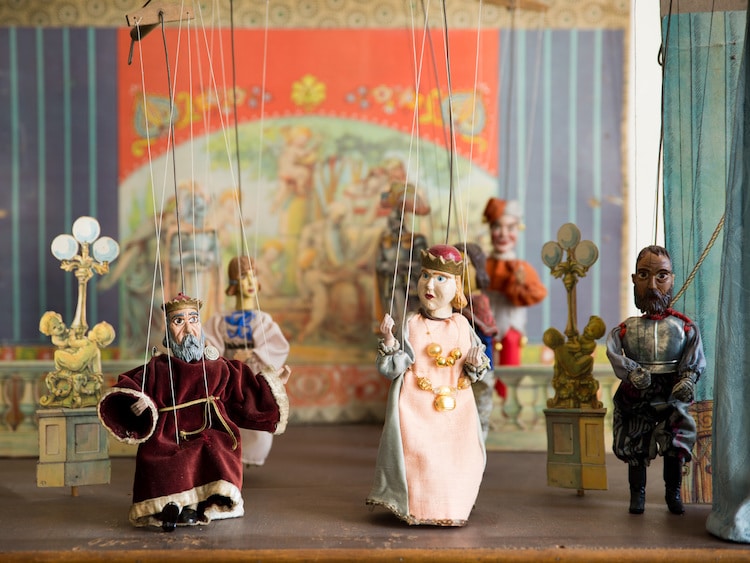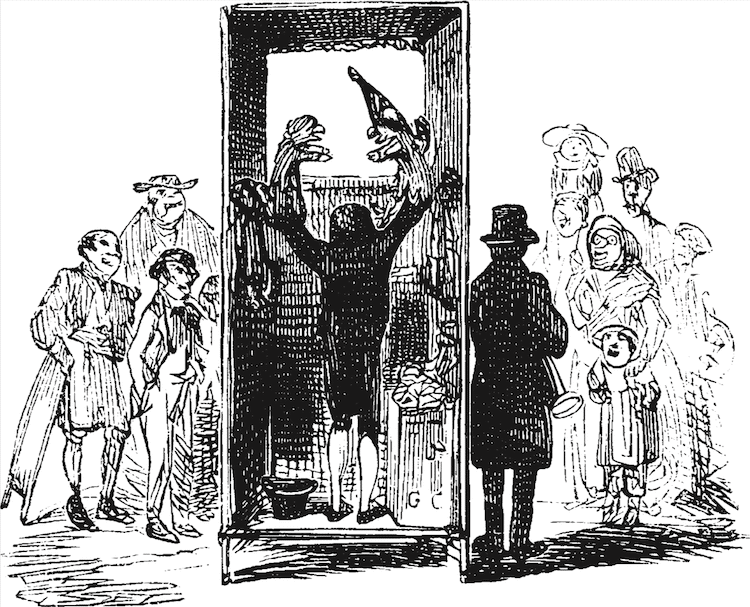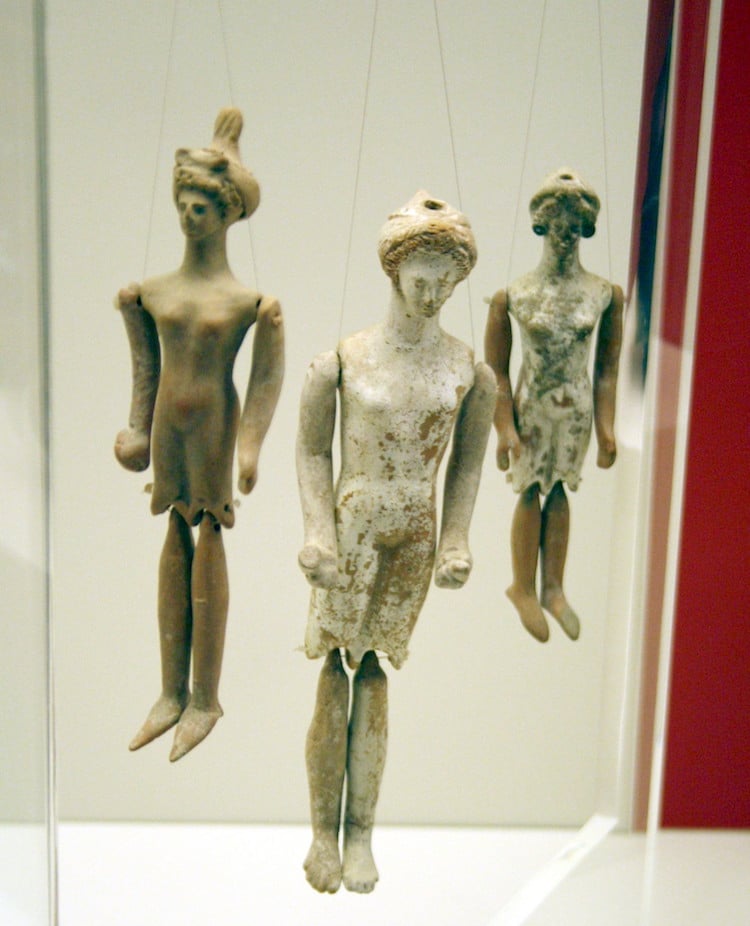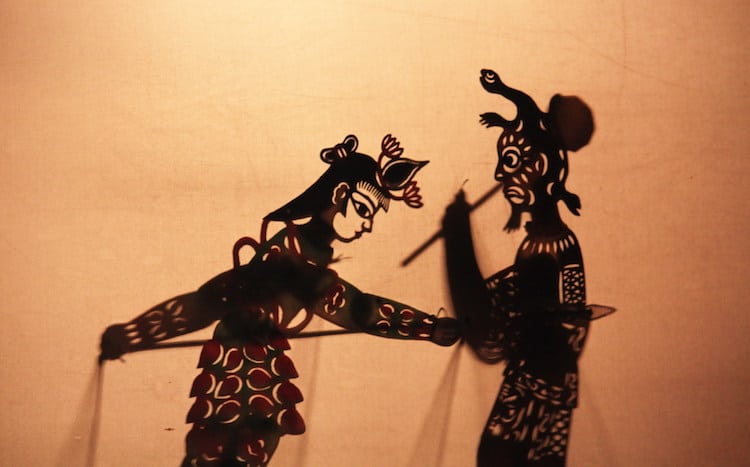
Photo: Stock Photos from Dziurek/Shutterstock
No performing art is quite as fascinating as puppetry. Blending all kinds of crafts—from acting and animating to design and doll-making—this unique practice holds a special role in the theater tradition. Since making their grand debut thousands of years ago, puppet productions have popped up in art and culture scenes around the world, making them among the oldest—and most widely celebrated—theatrical renditions in history.
Want to learn all about puppetry's story? Here, we shine a spotlight on this enchanting form of entertainment, tracing its evolution from ancient religious dramas to modern spectacles.
What is Puppetry?

Photo: Stock Photos from Morphart Creation/Shutterstock
Puppetry is a genre of theater. Rather than rely on actors to perform as characters, puppetry revolves around the use of puppets—objects that are controlled by people called puppeteers. Puppeteers manipulate the movements, gestures, and even expressions of the puppets with a variety of methods, including pulling strings (marionettes), propping them up with rods (rod puppets), or simply placing their hands (hand puppets) or fingers (finger puppets) inside the objects.
Much like theatrical performances starring human actors, today's puppet shows often feature props, sets, lighting, and sound. While these modern productions are mostly put on to entertain, puppet shows of the past often served more solemn purposes like telling religious stories, teaching moral lessons, and preserving heritage.
Setting the Stage

Ancient Greek Marionettes (Photo: Wikimedia Commons [Public Domain])
During the Middle Kingdom (ca. 2030–1650 BCE), evidence suggests that Egyptians crafted automatons made out of wood. Operated by strings, these puppet prototypes simulated everyday activities, like the act of preparing dough for bread. Over the coming centuries, jointed clay and ivory puppets controlled by wires were found in tombs, while “walking statues”—figurines used to represent protagonists in religious dramas—were referenced in hieroglyphics.
In Ancient Greece, 5th-century-BCE historians Herodotus and Xenophon mention puppets in their writings. Their allusions to nevrospastos, which literally translates to “drawn by strings” or “string-pulling,” serve as the earliest known written record of the practice, which Herodotus describes in the context of a religious procession. “They invented the use of puppets two feet high moved by strings…” he wrote in The Persian Wars. “A flute-player goes ahead, the women follow behind singing of Dionysus.”
Theatrical Traditions

Chinese Shadow Puppets (Photo: Stock Photos from Photobank/Shutterstock)
Over the course of centuries, puppets made appearances in cultures around the world. During the Northern Song Dynasty (960–1127) in China, Shadow Theater—a spectacle in which light is cast on translucent or opaque rod puppets so that they emit colorful shadows or black silhouettes, respectively—made its dazzling debut.
In medieval France, stringed puppets were given the name marionette (“little Mary”), as the Virgin Mary emerged as a favored character in puppet shows put on by the Catholic church. This practice would play a particularly large role in Italy, where the Sicilian L'Opera deî Pupi (“Opera of the puppets”) adapted the commedia dell' arte—the Italian theater tradition—as whimsical productions starring the stringed figurines.
In the 17th century, puppeteers in Great Britain borrowed the look and feel of Italy's commedia dell' arte to create “Punch and Judy,” a slapstick show revolving around the comical—and violent—antics of a married couple. Though Punch (adapted from commedia dell' arte character Pulcinella) and Judy were originally marionettes, the stringed figures were later swapped out for hand puppets in order to better accommodate their aggressive movements without fear of tangling.

Guignol Puppet (Photo: Stock Photos from Edel_s/Shutterstock)
In 18th-century France, dentist-turned-puppeteer Laurent Mourguet followed in Britain's footsteps and turned to Italian models for inspiration. While his concept for Guignol, a witty working-class character, is modeled after Pulcinella, it mostly derives from Mourguet's own experiences with poverty—a relatable approach that has made Guignol popular across generations.
During the Edo Period (1603-1868) in Japan, Bunraku emerged as a popular yet serious form of entertainment. Native to Osaka, it flourished with the rise of Kabuki, a genre of Japanese theater that blended contemporary music, impressive acrobatics, and stylized make-up and costume design. Due to the strikingly realistic movements and expressions of Bunraku‘s hand-crafted, stringless, and relatively large (about half life-size) wooden puppets, it has since been cherished as an important Japanese art form.
From 1835 until the middle of the 20th century, the Compañía Rosete Aranda, a marionette troupe, stole the show in Mexico. The company is celebrated for its troupe of 5,000 string-operated puppets. Originally made of papier-mâché and later crafted from mahogany, these colorful marionettes remain a major form of folk art in Mexico City. Today, many of these figures have adopted new roles as museum objects.
In the middle of the 20th century, puppetry took a modern turn when it was adapted for new audiences: television viewers. In the United States, several stringed, hand, and rod puppets made their televised debuts during this period, from Mister Roger's soft-spoken neighbors in the “Land of Make-Believe” to Jim Henson's colorful Muppet monsters.
Contemporary Puppetry

Contemporary Bunraku Puppet (Photo: Stock Photos from cowardlion/Shutterstock)
Today, puppetry remains a beloved performing art form. In order to preserve their traditional productions, many countries and cultures around the world continue to put on a show. In Japan, for example, the National Bunraku Theater is sponsored by the government; in England and France, Punch, Judy, and Guignol dazzle new generations at parks, beaches, and other public sites; and, in the United States, Sesame Street‘s fuzzy residents still delight children and adults alike after over 50 years.
Puppetry today, however, comprises more than just spotlighting past renditions. Contemporary puppeteers continue to reimagine the craft, creating productions that pair age-old approaches with forward-thinking ideas—many of which are even taught and presented in an academic context. “Today’s puppet artists are usually educated in conservatories and universities specializing in puppetry,” the International Association of Theater Critics explains. “They are encouraged to work with literature and with other art forms and make puppetry melt into the performing arts.”
Whether keeping time-honored traditions alive, starring in mainstream media, or “melting” into more avant-garde productions, puppets remain center-stage in contemporary theater.
Related Articles:
Fun Paper Animal Puppets Designed to Move in Unexpected Ways When Touched
5 Pioneers of Early Animation Who Influenced the Future of Film
Tracing the History of Decorative Art, a Genre Where “Form Meets Function”






















































































